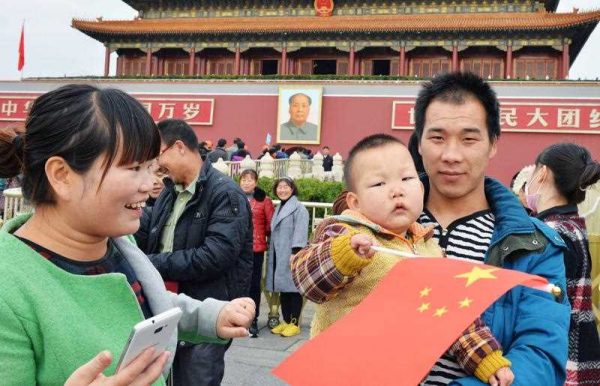But it is unclear whether ending China’s more than 30 year long one-child policy will trigger the demographic changes that the CPC hopes for.
According to census data issued by China State Statistics Bureau in 2011, those aged 60 years and older account for 13.26 per cent of the total Chinese population. This is 2.93 percentage points higher than recorded during the 2000 census. And those aged 65 years and above account for 8.87 per cent of the population, 1.91 percentage points higher than the 2000 census. This rapid ageing of the population, combined with falling birth rates, has led to shortages in the working-age population. To combat China’s ageing population and shrinking workforce China has loosened control over birth restrictions.
The abandonment of China’s stringent one-child policy was prompted after the limited relaxation of the policy in 2013 produced disappointing results. Under the 2013 revision, couples from one-child families were permitted a second child. According to the National Health and Family Planning Commission (NHFPC), as of May 2015 1.45 million couples had subsequently applied to have a second baby — only 13 per cent of all eligible couples.
An additional 90 million couples would be eligible to benefit under the new policy. The abandonment of the one-child policy targets groups who were exempted under the 2013 relaxation, such as women over the age of 35. The communiqué has provoked widespread discussion over the policy’s wisdom. Many parents are now struggling with the decision of whether to have another child or not.
But some demographers argue that the abandonment of the one-child policy may not cause a significant rise in the population of China. Yuan Xin, an expert in population studies at Nankai University in Tianjin, has observed that the traditional Chinese concept of having multiple children has changed alongside developments in China’s economy and society over the past few decades. The National Health and Family Planning Commission (NHFPC) itself has agreed that, ‘it has been a mainstream concept among Beijing residents to give birth to fewer and better children after decades of the family planning policies the city adopted in the 1970s’.
More people are opting for fewer children, especially in big cities such as Beijing. Couples with only one child mainly live in the cities, where the cost of housing and education is comparatively high. Most of them tend to choose not to have a second child owing to financial pressures. According to a survey conducted by China Youth Daily, 84.9 per cent of respondents reported worrying about the financial pressure of raising a second child. Couples who are wealthy enough that they can afford to bring up a second child are usually over 40 years old and are confronted with difficulties in giving birth.
Peng Xizhe, director of the Center for Population and Development Policy Studies at Fudan University, says childbirth is influenced to some degree by policy. But the deciding factors are the population’s financial status, philosophy and lifestyle.
Other factors that may determine whether couples opt to have another child include the mother’s health, additional pressure on grandparents and the impact on the career development of the parents (especially the mother). Couples must also consider how children accustomed to being the only child will respond to changes to the family structure and how this may impact their development. Even when the one-child policy is lifted, few people are likely to be willing to choose a larger family.
Still, the CPC hopes to get a better response to its new two-child policy, than previous policy relaxations. According to the NHFPC, allowing all couples to have two children will improve the population structure of and maintain the vitality of society. The NHFPC expects that the new two-child policy will help raise the population to an estimated 1.45 billion by 2030. But how effective the new policy will actually be in addressing China’s growing demographic problems remains to be seen.
Liu Lili is Professor with the Department of Culture and History at the Chinese Central Party School in Beijing.

